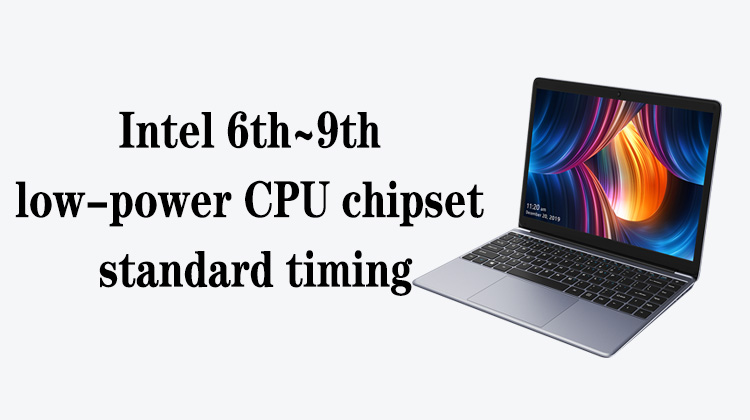1
00:00:00,200 --> 00:00:01,766
iPhone boot process
2
00:00:02,266 --> 00:00:08,066
This video mainly explains the steps of turning on the iPhone and the common faults caused by different steps
3
00:00:09,866 --> 00:00:10,900
Boot steps
4
00:00:11,033 --> 00:00:15,233
Step 1, buckle the battery or adjustable power supply on the mainboard
5
00:00:16,000 --> 00:00:20,233
Step 2, the battery or adjustable power supply will reach the charging tube
6
00:00:20,233 --> 00:00:23,133
or charging chip through the board layer wiring,
7
00:00:23,300 --> 00:00:25,033
and convert the main power supply
8
00:00:26,533 --> 00:00:30,266
The main power supply will provide operating voltage for many chips
9
00:00:30,600 --> 00:00:32,833
If there is a problem with the main power supply,
10
00:00:33,400 --> 00:00:38,866
it will lead to a large short-circuit of the power connection, or the power connection leakage
11
00:00:39,233 --> 00:00:42,433
Step 3, in the chips powered by the main power supply,
12
00:00:42,700 --> 00:00:44,633
the main power supply will work first
13
00:00:44,866 --> 00:00:46,733
After the main power supply works,
14
00:00:47,266 --> 00:00:52,733
it will provide the working voltage for the 32.768k crystal oscillator
15
00:00:53,233 --> 00:00:59,633
Let it generate a 32.768k clock signal and return to the main power supply
16
00:01:00,166 --> 00:01:02,366
If the crystal oscillator is abnormal,
17
00:01:02,833 --> 00:01:06,233
it will cause iPhone 11 and above models not to trigger
18
00:01:06,833 --> 00:01:11,966
iPhone 6-iPhone XS Max will cause constant current or small current fault
19
00:01:13,833 --> 00:01:14,933
Step 4
20
00:01:15,033 --> 00:01:18,466
After the main power supply has the main power supply and clock signal,
21
00:01:18,866 --> 00:01:20,900
it will generate standby power supply
22
00:01:21,766 --> 00:01:27,466
The name of Apple's full range of standby power supply is PP1V8_ALWAYS
23
00:01:28,433 --> 00:01:32,166
This power supply provides a pull-up voltage to the switch pin
24
00:01:32,800 --> 00:01:37,233
If the standby power supply is abnormal, it will cause no trigger fault
25
00:01:38,100 --> 00:01:39,300
Step 5
26
00:01:39,400 --> 00:01:43,000
After the switch pin voltage is normal, we trigger the boot
27
00:01:43,666 --> 00:01:48,066
If the switch pin signal is abnormal, or the switch pin line is disconnected,
28
00:01:48,533 --> 00:01:50,433
it will cause no trigger fault
29
00:01:52,433 --> 00:01:53,533
step 6
30
00:01:53,766 --> 00:01:56,766
After the main power supply receives the power-on signal,
31
00:01:56,966 --> 00:02:00,300
it will convert the main power supply into more than 30 power supplies
32
00:02:00,300 --> 00:02:03,466
to provide working voltage for other chips on the mainboard
33
00:02:04,566 --> 00:02:07,966
There are about 15 high-current BUCK power supplies,
34
00:02:08,566 --> 00:02:12,000
and about 15 low-current LDO power supplies
35
00:02:13,900 --> 00:02:17,766
If the BUCK power supply output by the power supply is short-circuited,
36
00:02:18,033 --> 00:02:20,500
it will cause a large current when starting up
37
00:02:20,933 --> 00:02:23,900
If there is a short circuit in the LDO power supply,
38
00:02:24,100 --> 00:02:26,066
the trigger current will be too large
39
00:02:27,766 --> 00:02:28,866
step 7
40
00:02:29,100 --> 00:02:34,133
After the power supply of each chip on the mainboard is normal, the CPU will work first
41
00:02:35,100 --> 00:02:39,933
The CPU will provide the working voltage for the 24M crystal oscillator,
42
00:02:40,533 --> 00:02:44,100
and let it generate a clock signal and return it to the CPU
43
00:02:44,800 --> 00:02:46,933
If the crystal oscillator is abnormal,
44
00:02:47,133 --> 00:02:50,366
it will lead to a small current fault when starting up
45
00:02:51,400 --> 00:02:56,200
Step 8, after the power supply and clock signal of the CPU are normal,
46
00:02:56,366 --> 00:02:59,300
a test clock signal will be sent to the main power supply
47
00:03:00,400 --> 00:03:03,500
This step is less damaged in actual repairs
48
00:03:04,366 --> 00:03:08,666
Step 9, after the main power supply receives the test clock signal,
49
00:03:08,833 --> 00:03:13,433
it sends out a reset signal, which includes the reset signal of the CPU
50
00:03:14,000 --> 00:03:16,633
If the reset signal of the CPU is not normal,
51
00:03:16,800 --> 00:03:18,766
it will cause the CPU not to work,
52
00:03:19,033 --> 00:03:21,933
resulting in a small current fault when starting up
53
00:03:22,333 --> 00:03:23,333
step 10
54
00:03:23,566 --> 00:03:28,233
After the CPU supplies power, clock signal and reset signal are normal,
55
00:03:28,833 --> 00:03:35,066
the CPU will send the clock and reset signal to the hard disk to prepare for reading the self-test program
56
00:03:36,366 --> 00:03:39,133
This step is less damaged in actual repairs
57
00:03:40,366 --> 00:03:44,333
Step 11, after the hard disk working condition is normal,
58
00:03:44,566 --> 00:03:49,366
the CPU reads the self-test program stored in the hard disk through the SPI bus
59
00:03:49,866 --> 00:03:53,000
If the hard disk is damaged or the hard disk is removed,
60
00:03:53,733 --> 00:03:55,966
it will cause a constant current fault
61
00:03:56,233 --> 00:04:00,333
Step 12, after the CPU reads the self-test program,
62
00:04:00,466 --> 00:04:03,100
it first performs a self-test on itself
63
00:04:03,766 --> 00:04:08,566
Apple's CPU integrates graphics cards and various management modules,
64
00:04:08,833 --> 00:04:11,466
and the temporary storage is above the CPU
65
00:04:11,933 --> 00:04:16,800
If the CPU fails the self-test of itself, it will cause a constant current,
66
00:04:17,233 --> 00:04:19,700
and the current will jump and then stabilize
67
00:04:20,233 --> 00:04:22,166
Ok, that's it for this video






